Sending Cheese into Space
In this NewsFlash, we find out how graphene has been used to build a new high density ultracapacitor which could allow electric cars to charge in minutes. We also discover how bees' see the world, how slow clearence of a protein in the brain may lead to Alzheimer's disease and why glider pilots should be paying more attention to falcons. Plus, we learn about a new exoplanet that has led astronomers to question theories of planetary formation and we celebrate the first chunk of cheese to make it into space.
In this episode
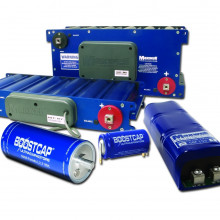
00:25 - New High Density Ultracapacitors
New High Density Ultracapacitors
There are two main traditional ways of storing electrical energy, you can use a rechargeable battery to store the energy chemically, which will store quite a lot of energy up to 350 watt hours per kilogram, but it will do so quite slowly and for a limited number of recharge cycles. The other option is to use a capacitor, this in a simple case is basically two sheets of metal with a layer of insulator in between. If you apply a voltage some charge will flow onto the sheets and will be attracted to the opposite charge on the other sheet. because they are not using chemical reactions capacitors can charge and discharge thousands of times faster than batteries and they waste much less energy as heat. 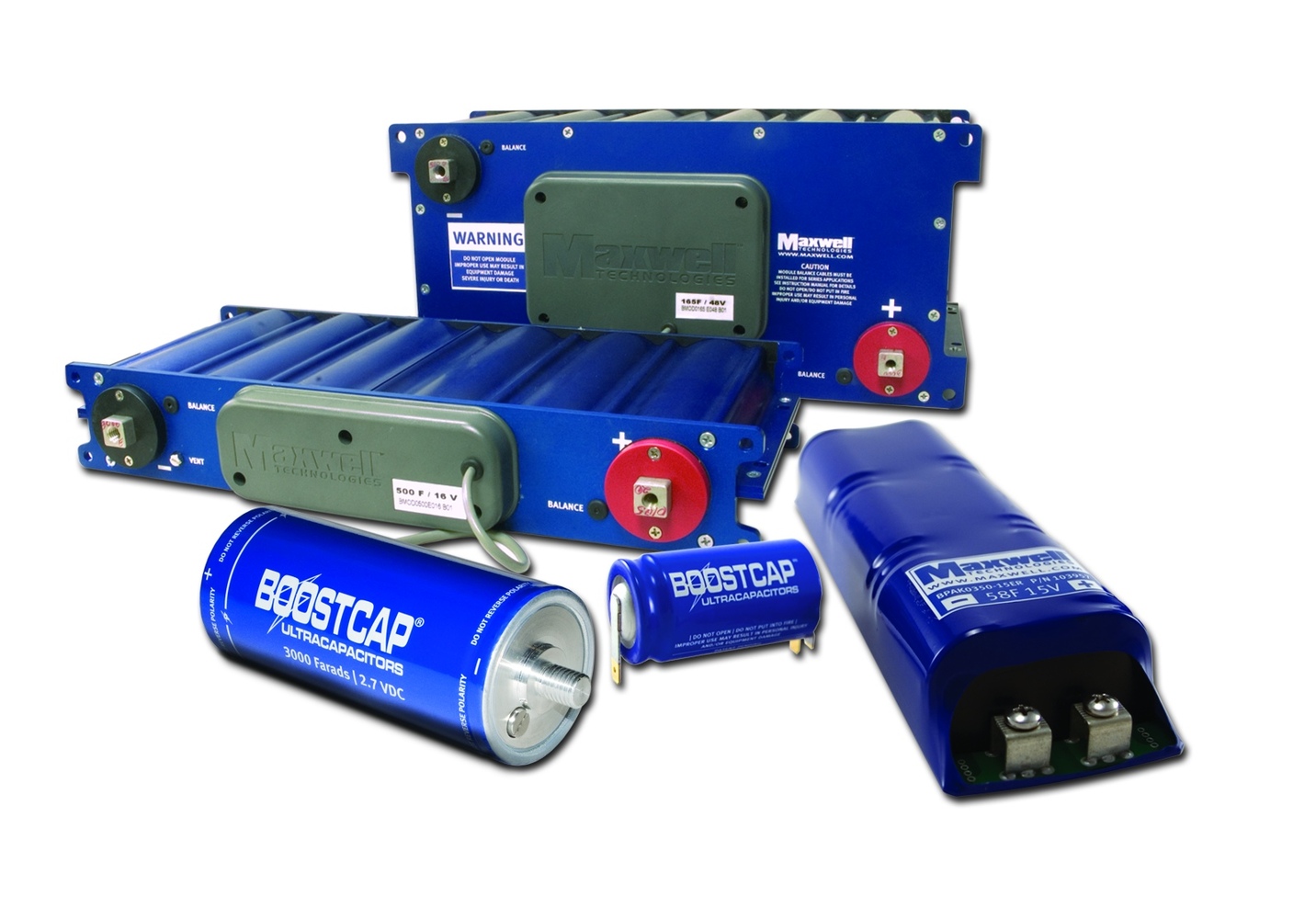
The problem is that conventional capacitors store less than a thousandth of the energy of batteries. To increase this you need to reduce the distance between the plates stabilising the charges and allowing the capacitor to store more energy at the same voltage. Recently by using activated carbon with a huge surface area filled with an ionic liquid as an electrolyte supercapacitors have got this up to and energy density about as good as lead acid batteries.
Now Chenguang Liu and colleagues has used graphene, which is essentially a single layer of graphite a single atom thick as the electrode. This is about the thinnest an electrode can get, and they have altered the graphite so that it is curved, and won't lie flat and stack. This means that the ionic liquid electrolyte can get between the layers and produces a very efficient capacitor. They can store between 80 and 136 Whrs/kg which is about as good as a nickle metal hydride battery, which were the standard batteries 10-15 years ago. That might not sound very impressive until you realise that it would charge in seconds or at the most a couple of minutes as opposed to hours for a lithium ion battery.
This would both allow an electric car to charge up as fast as you would normally fill up with petrol, and make it ideal for storing large amounts of energy very quickly such as when you brake hard in a hybrid vehicle.
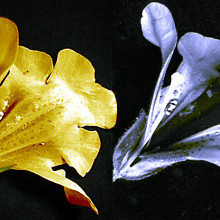
02:57 - An Insect’s Eye View of the World
An Insect’s Eye View of the World
A new database named FReD could help to establish how bees see flowers, helping researchers understand more about bees, one of the world's most important pollinators...
Bee vision is very different from human vision, they perceive colours we are simply incapable of seeing.
Most insects have light sensitive cells, or photoreceptors, that are sensitive to ultraviolet, blue and green light and many have four or more receptor types, allowing them to perceive a wide range of wavelengths of light from long to very short. In comparison, human eyes are just not up to the job of assessing flower appearance objectively.
Now, for the first time, a database has been developed that collects an extensive range of data on the full reflectance spectrum of flowers, and is freely available online.
Publishing in the open-access journal PLoS One, Sarah Arnold from Queen Mary University of London and colleagues announced the creation of FReD, the Floral Reflectance Database, which contains the reflectance spectrum, or how much light is reflected at different wavelengths, for flowers from all over the world.
To really understand the environment as perceived by an insect you also need to know which wavelengths the species can detect. This is also included in FReD and allows researchers to create a "colour space" for an insect, observing flowers specifically from that species' perspective.
FReD is set to grow as its users provide more reflectance data from different species and habitats and, although the priority so far has been bees, improve the catalogue of insects available.
As FReD contains data on flowers of different ages but from the same species, it can also be used by botanists researching global trends in flower colour, plant growth and development; by ecologists studying habitat diversity and interactions; as well as those researching the vital role that pollinators play in our environment.
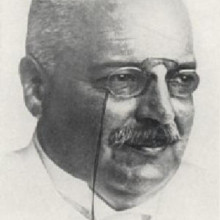
05:47 - What Causes Alzheimer's Disease?
What Causes Alzheimer's Disease?
Randall Bateman, Washington University School of Medicine
Ben - Alzheimer's disease is a common cause of cognitive decline amongst elderly people. An estimated one person in every five over the age of 80 is affected, and develops a range of symptoms including memory loss. The cause of the disease is a build up in the brain of a protein called beta amyloid which damages nerve cells, but why does this happen? Chris Smith spoke to Randy Bateman, a neurologist at Washington University in St. Louis...
Randy - So, there was a basic question which we began to consider about four or five years ago, and the question was, what causes Alzheimer's disease? And that question has been asked for a long while, but this was more directed at the current thinking about what causes Alzheimer's disease in relationship to what's known scientifically. There's an amyloid hypothesis which specifies that build up of a protein called amyloid beta, which is normally made by our brains, that this increase in this protein in the brain leads to damage that causes the symptoms of Alzheimer's disease. Now the basic question that we were asking was in Alzheimer's disease, does the amyloid beta build up there because it's being produced too much, or made too much in the brain, or is it there because once made, the brain has a problem clearing it away? Some of the basic information about amyloid beta is that the brain normally makes this, the neurons or the thinking cells of the brain normally produce this amyloid beta protein in the brain, and it's normally cleared away and it doesn't build up into very high amounts. But what we also know is that in patients that have Alzheimer's disease, their brains are filled and littered with this substance up to 100 to 1,000 fold normal levels. So it builds up at very high levels and this is thought to be toxic to the brain and cause damage, ultimately culminating in dementia of the Alzheimer's type.
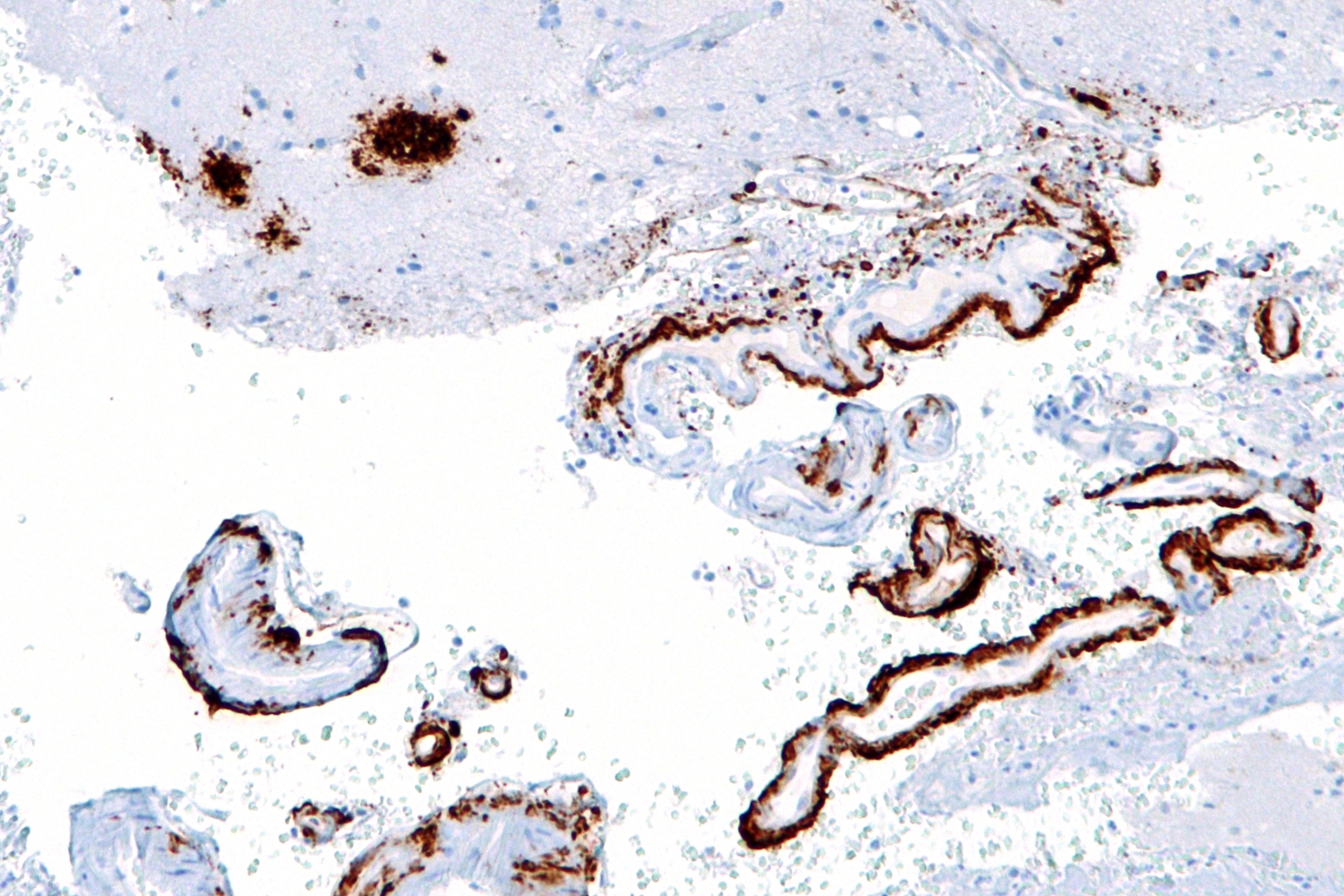 |
Micrograph showing amyloid beta (brown) in senile plaques of the cerebral cortex (upper left of image) and cerebral blood vessels (right of image) with immunostaining. © Nephron @ Wikipedia |
Chris - So you've got two problems there. One of them is, that there's too much being produced or is it that it's not being dispensed with, dealt with by the brain as it is in a healthy person's brain? So how can you try and disentangle those two?
Randy - That was the challenge and that's where the technique was actually developed to answer this question. Essentially, the way to do this is to label the proteins as they're being made so you can track them. And then once a protein is labelled then you can track how fast it's being produced, how quickly it's being cleared away. The first publication of the method itself was in 2006 where we reported what normally happens in young healthy people with amyloid beta in the brains in terms of its production and its clearance rate. And often, I use an analogy that this labelling system - imagine that you have a single water and you have a faucet on with water coming into the sink, and you have a drain that's draining the sink at the same time. If you just look at the sink and you don't look at the faucet or the drain, you only see a level of water in the sink, and that's what we normally measure when we sample the fluid that surrounds the brain. We measure how much of that amyloid beta protein, or the water level, is there. One way to track how fast it's coming in is, you can imagine that if you dyed the water coming out of the faucet a certain colour, say blue, that the water in the sink would turn bluer and bluer over time, the more blue water came into it. And if you watch over time, how much of that water has been labelled with that - in this case, a colour label. In the case of the amyloid beta protein, we're using a label that's just slightly heavier for the protein then we can estimate how fast the production or the rate of water coming in to the sink is. And by the same token, if you stop labelling and then you watch the water as it's cleared away, new fresh clear water comes in and the blue is cleared away, you then have an estimation of how fast the sink is draining that water. And so, this is what we do. We take a label that incorporates into the protein, it's an amino acid which is a building block of proteins which our body normally makes, and it's slightly heavier than normal amino acids. We infuse that into the bloodstream of the person and all the proteins that person is making can be tagged with this label, marking it as newly made. Then we sample over time the fluid that surrounds the brain, it's called cerebrospinal fluid and we watch the appearance of this newly labelled amyloid beta protein, and then we stop labelling and we watch how that labelled amyloid beta is cleared away over time.
Chris - And you did this in healthy people and you did this presumably in a group of Alzheimer's patients to compare the rate of production and removal of the beta amyloid in the brains of both?
Randy - Exactly. And so, in this study, what we did is we compared 12 people who have Alzheimer's disease to 12 people who don't have Alzheimer's disease, but are about the same age, and we compared the two to find that there was a significant decrease in the clearance of amyloid beta. But on average, there was no significant change in the production rate of amyloid beta.
Chris - The only problem with this study is that it tells you about people who've already been diagnosed and it would be very interesting to wind the clock back in their lives, or look upstream - look in people who are going to develop Alzheimer's disease or just look in people who are viewed as healthy, and then follow them up, and then see who does get Alzheimer's disease and see if there's anything lurking upstream in those people.
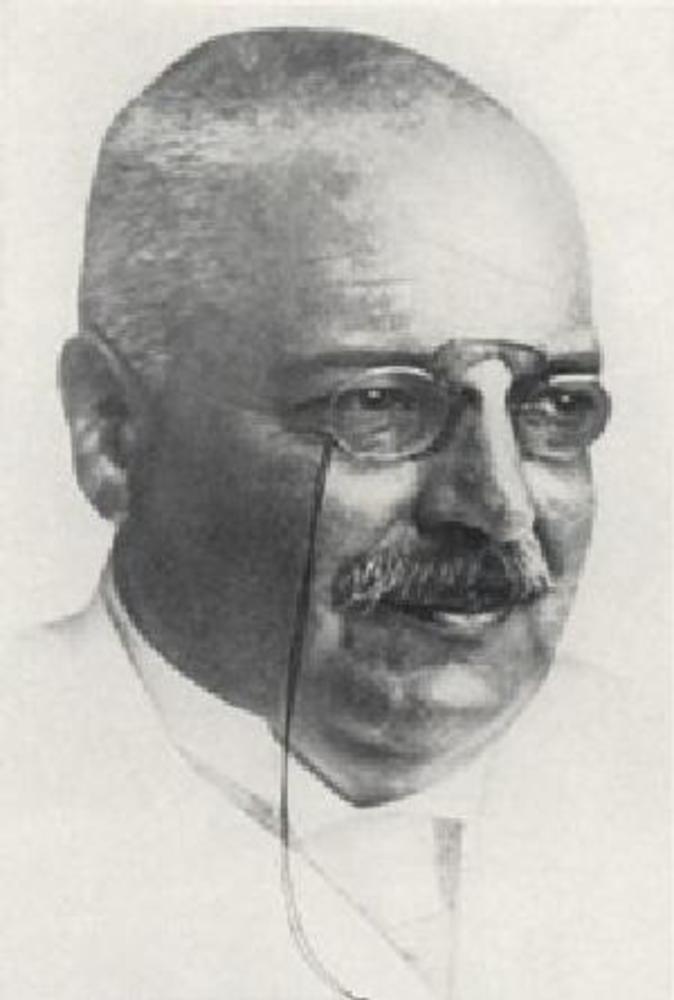 |
Alois Alzheimer |
Randy - That's exactly right. That's an insightful point and one which we're planning on doing as the study goes on and participants come in to the study. We're in fact following each individual over time clinically so that the cognitively normal people that have done this study, they don't all have exactly the same production in clearance rate. Some are faster and some are slower and so, the basic question is, are the people who have slightly impaired or impaired clearance but are cognitively normal now, are those people with increased risk of getting the disease at some point in the future?
Chris - How do you know that the people who have got Alzheimer's disease now haven't just got a reduced clearance because the disease has in some way damaged the brain, and the reduction of nerve cells that is associated with Alzheimer's disease has just impaired their ability to get rid of it? And that's why you're seeing that; As a consequence of the disease process, not so much as a consequence actually of having caused the disease.
Randy - With its current data, there's no way to distinguish between those two possibilities. And although we may hypothesise that for example, decreased clearance may lead to increased levels of amyloid beta and plaques, that's not demonstrated in this particular study. That's the point of doing the ongoing research, to determine if that's correct or not.
Ben - Randy Bateman, a neurologist who's looking for a way to knockout Alzheimer's disease on the head. He was talking to Chris Smith and has published that work this week in the journal Science.

12:54 - Glider Pilots Should Learn From Falcons
Glider Pilots Should Learn From Falcons
Gliding in all its forms has become a relatively popular pastime, and if you want to glide for anything more than a few minutes you have to take advantage of thermals, which are areas of warm air rising amongst the colder surrounding air. If you can keep your glider inside this column you will be lifted up without having to do any work.
The problem is of course that air is transparent so you can not see the thermals, and you are restricted to just feeling their effects. Therefore various rules have been worked out so that the glider stays in the thermal, essentially leaving you spiralling around, making the spiral larger if your rate of climb improves, so your wings are flatter, and making it tighter if it gets worse.
This system works well if you have a clean thermal, but if there is a lot of turbulence, you get temporary updrafts which is easy to confuse with a real thermal.
Zsuzsa Ákos and colleagues at Eötvös University in Budapest have been studying the flight of perguine falcons with attached GPS receivers. They have noticed that rather than always spiralling in one direction they occasionally swap direction, this sounds stupid as this will cause them to leave the thermal they are in, but in very turbulent air this means that they can test a larger volume of air for other better thermals, and if they find one they will stay in it, and in computer simulations it turns out to be better than the more conventional strategy.
This is of interest to glider pilots, but also to manufacturers of unmanned air vehicles which could save lots of energy by soaring, and nice simple rules like these allow them to soar without using up lots of energy calculating what to do next.

15:10 - Family of Four Planets Questions Formation Theory
Family of Four Planets Questions Formation Theory
Observations made by the Keck telescope in Hawaii have confirmed a fourth planet orbiting a nearby star but have thrown current theories of planetary formation into doubt.
 Publishing in the journal Nature this week Christian Marois, from the Herzberg Institute of Astrophysics in Canada, and colleagues in the United States analysed near infra-red images of the star HR 8799 and found a new exoplanet to add to the three previously discovered. These planets have particular properties that make this sort of imaging possible: They're very massive, the new one is somewhere between 7 and 10 times the mass of Jupiter; they're a long way from the star itself, over 25 times the distance between the Sun and the Earth; and they're relatively young, less than 100 million years. Younger planets are still hot from their creation, which makes them glow brightly in these frequencies.
Publishing in the journal Nature this week Christian Marois, from the Herzberg Institute of Astrophysics in Canada, and colleagues in the United States analysed near infra-red images of the star HR 8799 and found a new exoplanet to add to the three previously discovered. These planets have particular properties that make this sort of imaging possible: They're very massive, the new one is somewhere between 7 and 10 times the mass of Jupiter; they're a long way from the star itself, over 25 times the distance between the Sun and the Earth; and they're relatively young, less than 100 million years. Younger planets are still hot from their creation, which makes them glow brightly in these frequencies.
Finding new planets is always fascinating in itself but the really interesting thing about this system is that it doesn't fit with current models of planetary formation. There are 2 models that describe the formation of giant planets like this. There's the core accretion model, where small bits of rock collide and gradually clump together until the planet has enough mass and, therefore, gravity to hold on to an atmosphere. Then there's the disc instability or the gravitational collapse model, where variations in the disc of material around the star, the protoplanetary disc or proplyd, will condense out into balls of gas that gradually collect dusty matter at the core.
In the case of the HR 8799 system, the innermost planet could have formed by core-accretion, but those further out would need far longer; in fact, more than the age of the star itself. However, If we look to the disc instability model, the protoplanetary disc would not have been in the right condition to allow the innermost planet to form when it did.
So how did these planets get there? Right now, we can't be sure. The authors say that "a hybrid process with different planets forming through different mechanisms cannot be ruled out, but seems unlikely with the similar masses and dynamical properties of the four planets." The other option is that the planets formed elsewhere and then moved into their current locations, but until we find more systems like this one we simply don't have enough information to make a decision. But, with exoplanets being discovered at an astounding rate, we may find more of these planetary families soon.
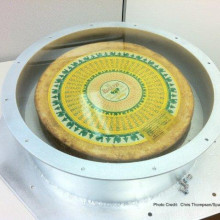
17:46 - Sending Cheese into Space
Sending Cheese into Space
SpaceX a relatively small california based company has just launched a wheel of le brouére cheese into space, and more impressively brought it down after two orbits. Why... essentially just because they could.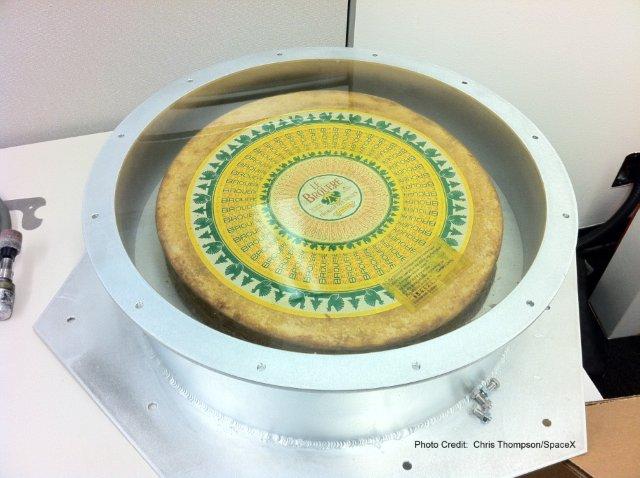
The really impressive thing about it is that SpaceX which is a relatively small company mostly owned by Elon Musk who made a fortune out of Paypal and has used it to build space rockets. SpaceX has built both the Falcon 9 rocket and the Dragon space capsule themselves. This is the first time that a private company has lauched something into orbit and brought it back down again in one piece, and it is particularly interesting as the capsule is designed to be able to carry 7 crew at some time in the future. But for now spacex are concentrating on using the Dragon capsule to take cargo to and from the International Space station.
The cheese was sent up because they needed something to act as a payload, and there was no reason not to send cheese, I think it is rather refreshing and good for the space industry that someone is in a position to send cheese into space because they want to...
Related Content
- Previous Do magnetic bracelets work?
- Next Why's Graphene Great?





Comments
Add a comment